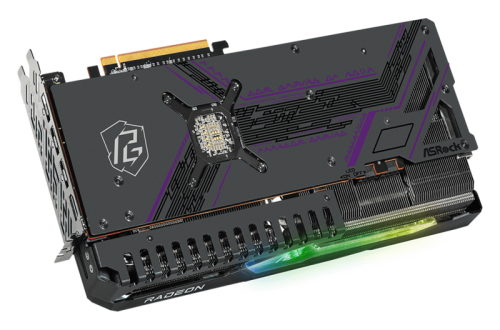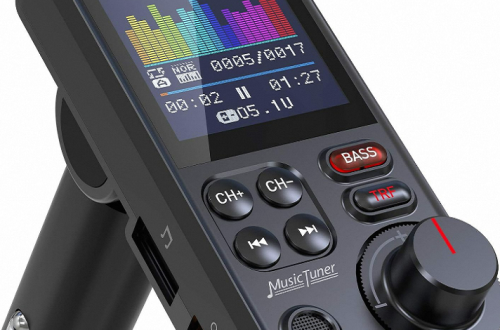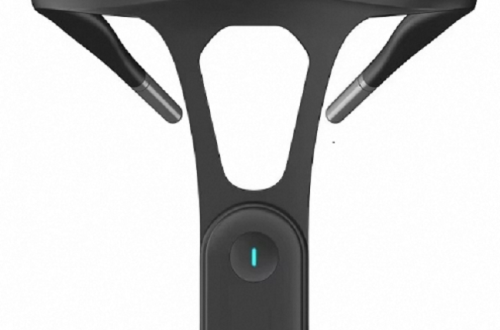Part 1: The Early Days of Headsets
Headsets have evolved greatly over the years, from their humble beginnings as simple listening devices to the advanced wireless models of today. The early days of headsets were characterized by their analog technology and basic functionality.
1. Analog Headsets:
The genesis of headsets can be traced back to the early days of telephony. These early devices were analog, tethered to a physical connection, and primarily designed for auditory input and output. Their functionality was relatively limited, focusing on basic voice communication. Despite their simplicity, analog headsets found significant utility in professional environments where hands-free operation was paramount. Industries such as call centers and air traffic control, which relied heavily on clear and efficient communication, embraced these early headsets as essential tools.
While these early headsets were a significant technological advancement, they were far from the sophisticated devices we know today. They lacked the advanced features and capabilities that have become commonplace in modern headsets. Nonetheless, they laid the foundation for the evolution of headset technology, paving the way for the development of more sophisticated devices that would eventually become ubiquitous in various aspects of our lives.

2. Basic Functionality:
In the early days of audio technology, headsets were rudimentary devices primarily designed for basic audio listening and communication. These early models were far from the sophisticated devices we know today, lacking the advanced features that have become commonplace. They were typically wired, bulky, and offered limited functionality.
Despite their limitations, these early headsets played a crucial role in various fields. They were used in professional settings like call centers and air traffic control, where hands-free communication was essential. Additionally, they were adopted by individuals for personal use, particularly for listening to music and radio broadcasts.
While these early headsets may seem primitive by today’s standards, they laid the foundation for remarkable advancements in headset technology. They paved the way for the development of wireless connectivity. They also paved the way for the development of noise cancellation and immersive audio experiences. This transformed headsets into indispensable tools for work, entertainment, and gaming.
Part 2: The Transition to Digital Headsets
The transition to digital technology brought about significant advancements in headset design and functionality. Digital headsets offered improved audio quality, advanced features, and more versatile connectivity options.
1. Digital Audio Quality:
The advent of digital technology ushered in a new era for headsets. As analog systems gave way to digital ones, headsets began to deliver significantly improved audio quality. Digital signals allowed for greater precision and detail in sound reproduction, resulting in enhanced clarity, fidelity, and dynamic range. This technological leap transformed the listening experience, making digital headsets a compelling choice for audiophiles and casual listeners alike.

Digital headsets offered a more immersive and enjoyable audio experience. They were used for listening to music, watching movies, or playing games. The ability to reproduce a wider range of frequencies and nuances in sound brought music to life. It enhanced the overall entertainment experience. As digital technology continued to evolve, headsets became more sophisticated. They incorporated advanced features such as noise cancellation, virtual surround sound, and customizable EQ settings.
2. Advanced Features:
Digital headsets have revolutionized the way we interact with audio. They introduced a plethora of advanced features that significantly enhanced the user experience. One of the most notable advancements is noise cancellation technology, which actively reduces ambient noise, allowing users to focus on their audio content without distractions.
Another significant feature is surround sound, which creates an immersive audio experience by simulating a 3D soundscape. This is particularly beneficial for gaming and multimedia consumption, as it enhances the overall entertainment value. Additionally, integrated microphones with noise reduction capabilities have improved the quality of voice communication, making digital headsets ideal for online meetings, video conferencing, and gaming.
Part 3: The Wireless Revolution
The advent of wireless technology revolutionized the headset industry, providing users with the freedom of movement and eliminating the constraints of traditional wired connections.
1. Bluetooth Connectivity:
Wireless headsets adopted Bluetooth technology, enabling seamless connectivity with smartphones, tablets, and other Bluetooth-enabled devices. This wireless capability allowed users to enjoy audio content and make calls without the limitations of cables, providing greater convenience and flexibility.

2. Freedom of Movement:
The advent of wireless technology revolutionized the headset industry, liberating users from the physical constraints of wired connections. Wireless headsets offered unprecedented freedom of movement, allowing users to roam freely without being tethered to their audio source. This newfound mobility made wireless headsets particularly appealing to active individuals who sought to enjoy their favorite audio content while on the go.
Professionals also benefited greatly from the convenience of wireless headsets. They could seamlessly transition between workspaces, attend virtual meetings, and take calls without being restricted by cables. Additionally, wireless headsets provided a more ergonomic and comfortable experience, reducing the risk of strain and discomfort associated with tangled wires. As wireless technology continued to advance, headsets became increasingly sophisticated, offering longer battery life, improved connectivity, and enhanced audio quality.
Part 4: The Rise of Smart Headsets
The integration of smart technologies into headsets has transformed them into multifunctional devices that offer a wide range of features beyond traditional audio playback and communication.
1. Voice Assistant Integration:
The integration of voice assistant technology has elevated headsets to a new level of intelligence and convenience. By incorporating virtual assistants like Amazon Alexa, Google Assistant, and Apple Siri, smart headsets have become powerful tools that extend beyond basic audio functions.
With a simple voice command, users can access a wealth of information, control smart home devices, make calls, send messages, and much more. These voice-activated capabilities streamline tasks, enhance productivity, and provide a hands-free user experience. Whether it’s checking the weather, setting reminders, or listening to audiobooks, smart headsets offer a seamless and intuitive way to interact with technology.

2. Biometric Monitoring:
Smart headphones are evolving beyond audio devices to become comprehensive health and fitness companions. Many models now incorporate biometric sensors that can track a range of vital signs and physical activity metrics. These sensors, often discreetly integrated into the earpieces or headband, can monitor heart rate, blood oxygen levels, and even electroencephalogram (EEG) signals.
By leveraging these biometric data, smart headsets can provide real-time feedback on workout intensity, stress levels, and overall health trends. This information can be invaluable for fitness enthusiasts and athletes who aim to optimize their performance and recovery. Additionally, these devices can alert users to potential health issues, such as irregular heart rhythms or elevated stress levels, prompting them to take necessary precautions.
Part 5: The Future of Headsets
As technology continues to advance, the future of headsets holds the promise of even greater innovation and evolution, with new features and capabilities on the horizon.
1. Augmented Reality (AR) Integration:
The future of headsets is poised to be even more immersive and interactive, thanks to the integration of augmented reality (AR) technology. AR headsets will overlay digital information and visuals onto the real world, creating a seamless blend of the physical and virtual realms.
Imagine wearing a headset that not only delivers high-quality audio but also displays real-time translations of foreign languages, provides navigational cues, or even enhances gaming experiences with virtual objects and characters. These AR-powered headphones will revolutionize the way we interact with the world around us.

As AR technology continues to advance, we can expect to see even more innovative applications, from remote collaboration and education to entertainment and gaming. The possibilities are endless, and the future of headsets is shaping up to be truly exciting.
2. Enhanced Comfort and Ergonomics:
Manufacturers are continually striving to enhance the comfort and ergonomics of headphones, recognizing that prolonged use can lead to discomfort and fatigue. To address this, they have implemented several innovative design strategies.
One key focus is the selection of premium materials. Soft, breathable fabrics are used for ear cushions and headbands to minimize pressure points and heat buildup. Additionally, adjustable headbands and swiveling ear cups allow users to customize the fit to their specific needs, ensuring optimal comfort for individuals of all sizes and head shapes.
Ergonomic design principles are also applied to the overall shape and weight distribution of headphones. Lightweight materials and balanced designs reduce strain on the neck and shoulders, enabling users to wear headphones for extended periods without discomfort. Furthermore, some headsets incorporate advanced features like memory foam ear cushions that conform to the shape of the user’s ears, providing a personalized and comfortable fit.
The evolution of headsets from analog to wireless and smart solutions has significantly transformed the way we consume audio content, communicate, and interact with technology. Ongoing advancements and a focus on user experience have enhanced the impact of headsets on everyday life. They provide users with increasingly immersive and versatile audio experiences.




